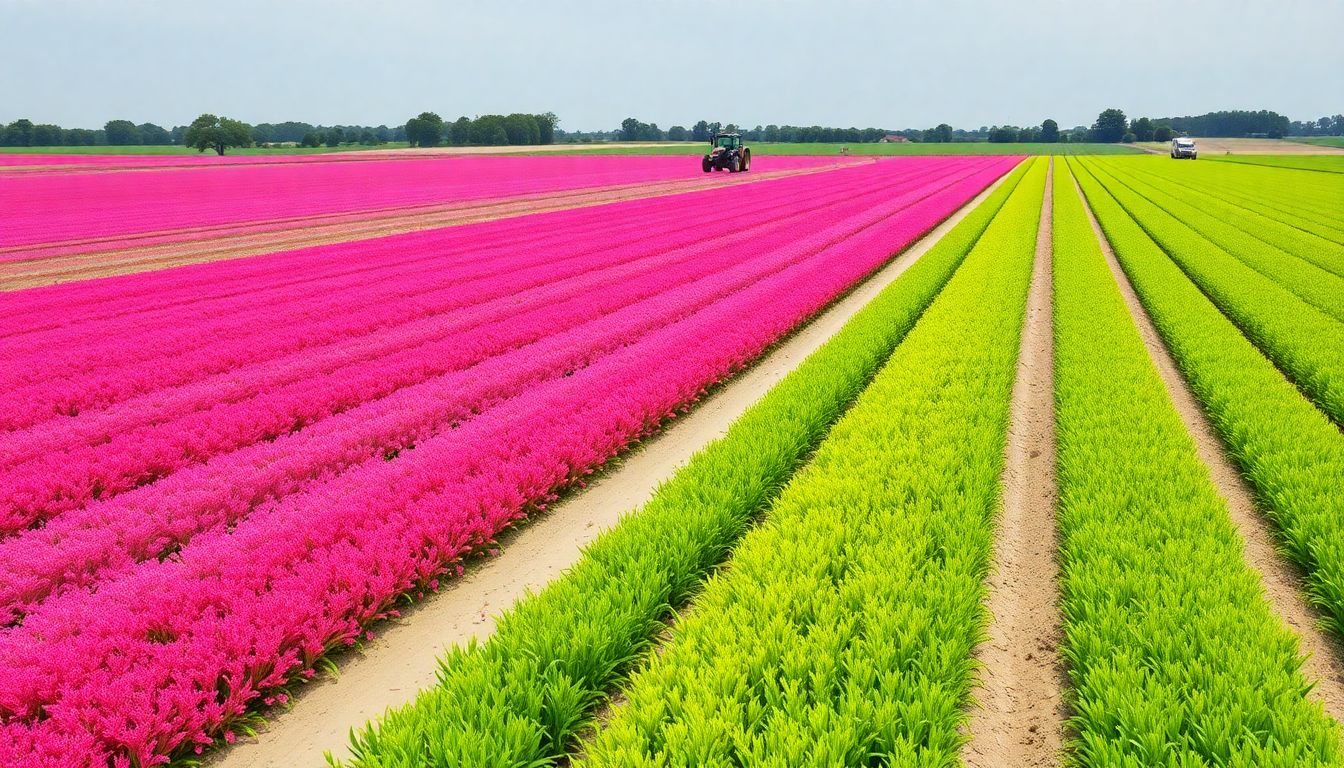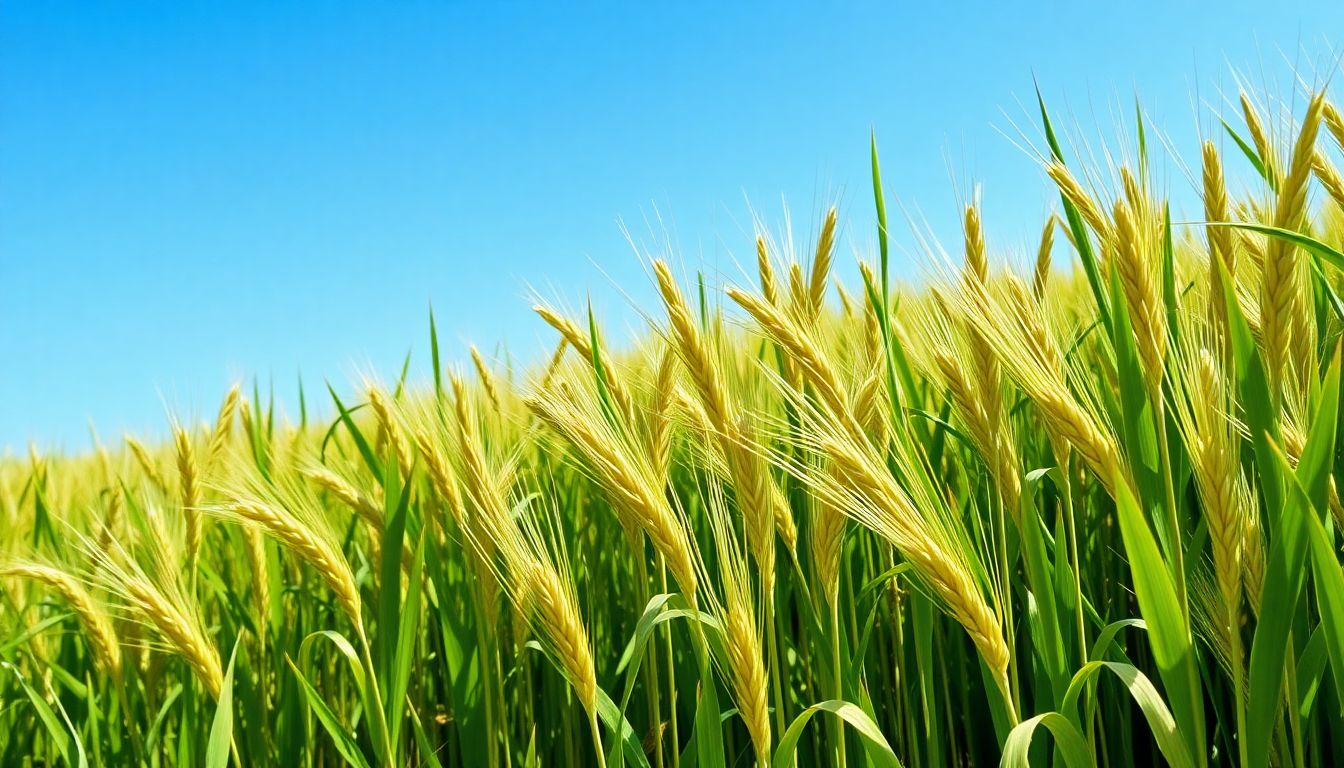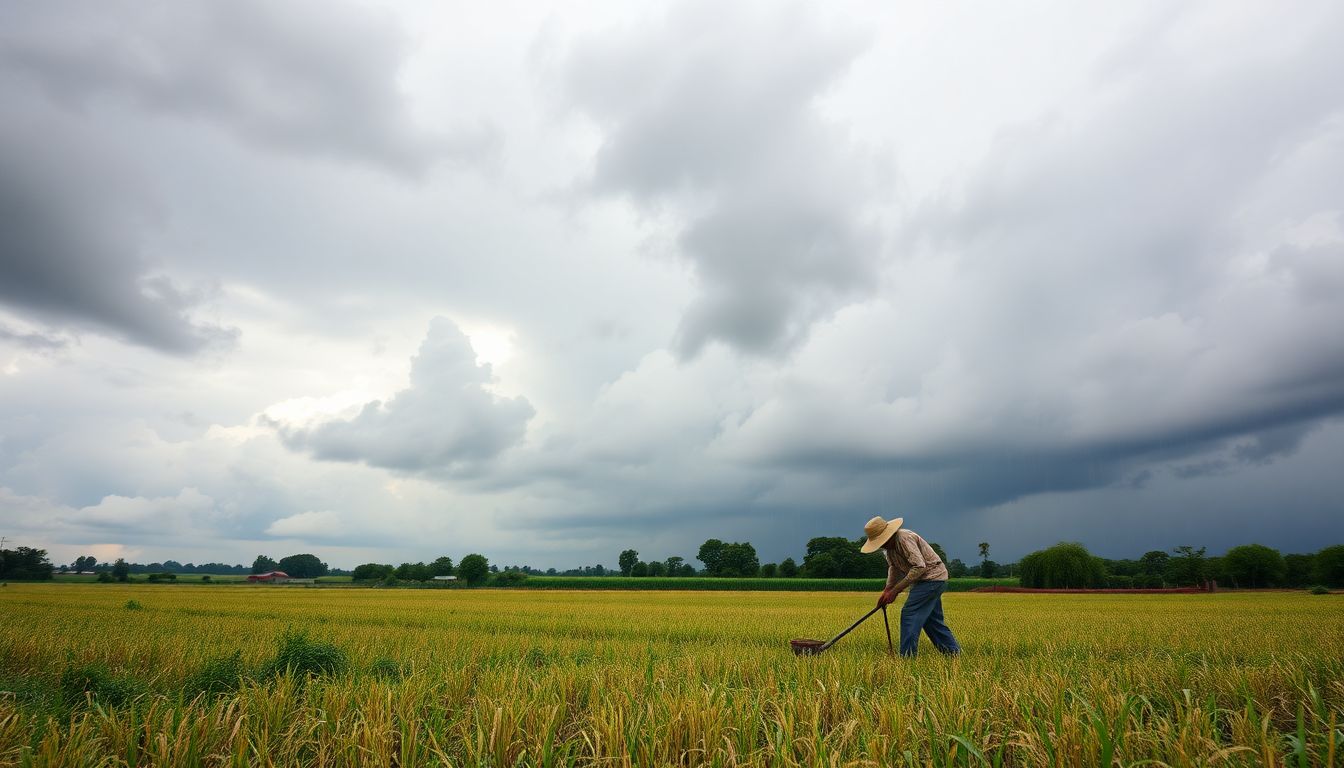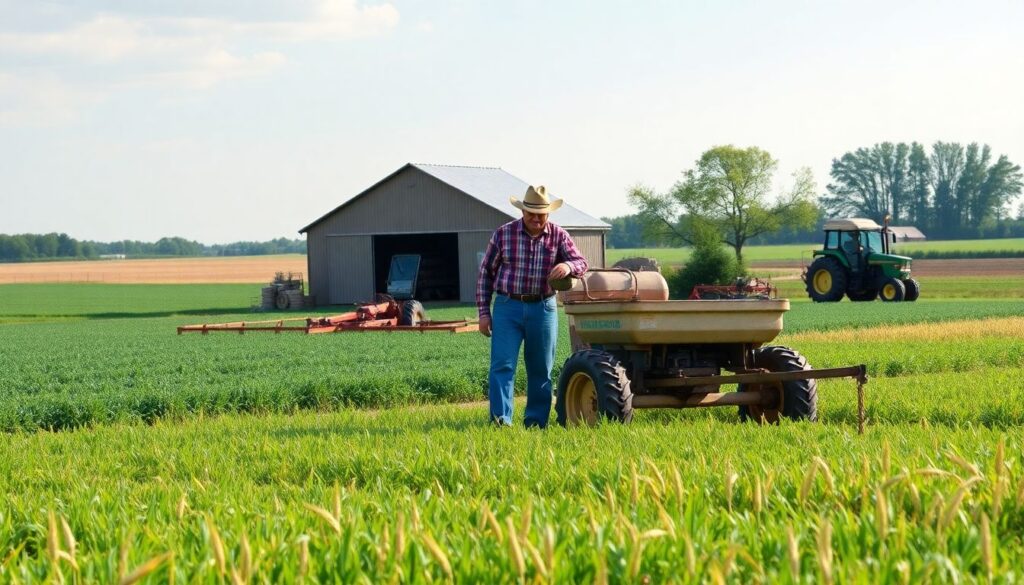Welcome to our feature on Lance Muirhead, a dedicated farmer from Macon County, Central Illinois. As the year 2024 draws to a close, Lance is already looking ahead to the 2025 growing season. Join us as we explore his preparations, innovations, and hopes for the upcoming year. This isn’t just about farming; it’s about the future of our food and the people who make it possible.
A glimpse into Lance Muirhead’s preparations for the upcoming growing season.
In the heart of Central Illinois, the sun begins to crest over the horizon, casting a warm glow across the sprawling farmlands. A seasoned farmer, his weathered hands a testament to years of toil and love for the land, steps out onto his fields. The air is crisp, but the promise of the 2025 growing season hangs thick with anticipation, like the rich scent of earth and dew that fills his nostrils.
Surrounding him are lush cover crops, their vibrant greens stretching out in every direction, interspersed with the golden hues of wheat fields swaying gently in the morning breeze. These crops, nurtured through the cold winter months, are a stark contrast to the stark landscapes of seasons past. They are a testament to the farmer’s dedication to sustainable practices, their deep roots nourishing the soil, preparing it for the upcoming harvest.
In the distance, a rustic farm shed stands sentinel, its weathered wood a canvas for the memories of countless seasons. Beside it, tillage equipment, polished and ready for action, reflects the dawning light. This equipment, an extension of the farmer himself, is a symbol of his relentless pursuit to till the soil, to plant the seeds, and to nurture the crops that will feed the nation and the world. As he surveys his land, the farmer’s eyes hold a spark of hope and anticipation. The 2025 growing season is more than just another year; it’s a promise, a challenge, and a dream waiting to be realized.

Looking Ahead
Lance Muirhead, a name synonymous with innovation in the farming community, has always been a step ahead. His forward-thinking approach was evident when he began planning for the 2025 growing season even before the 2024 harvest was complete. This might seem like jumping the gun, but in agriculture, early planning is not just an advantage; it’s a necessity.
Early planning in farming is crucial for several reasons. Firstly, it allows farmers to secure necessary resources such as seeds, fertilizers, and equipment before the demand peaks. This not only ensures availability but also helps in cost-effectiveness. Secondly, it provides ample time for soil preparation, which is vital for a successful harvest. Lastly, it enables farmers to anticipate and mitigate potential challenges, such as pest control or weather changes.
Muirhead’s approach involves several key steps, including:
- Assessing the previous year’s data to identify what worked and what didn’t.
- Setting clear goals for the next season, such as improving yield, enhancing sustainability, or trying new crops.
- Developing a detailed action plan that outlines tasks, timelines, and resources.
- Regularly reviewing and adjusting the plan as needed, because flexibility is key in farming.
The impact of this early planning can be significant. It can lead to improved crop yields, better resource management, and enhanced sustainability. Moreover, it can help farmers like Muirhead stay competitive in an increasingly unpredictable market. By looking ahead, they can anticipate market trends and align their production accordingly. In essence, early planning is not just about the next growing season; it’s about the future of farming.

Cover Crops and Strip Till
In the heart of agricultural innovation, techniques like cover crops and strip till are gaining significant traction, as observed by Lance Muirhead. These methods are not just trends; they are powerful tools that farmers are employing to enhance soil health and promote sustainable farming. Cover crops, such as clover, rye, and radishes, are planted during off-seasons to provide a protective barrier over the soil, reducing erosion and compaction. They also help in suppressing weeds naturally, reducing the need for herbicides. Meanwhile, strip till is a conservation tillage practice that only tills the soil where the crops will be planted, leaving the rest of the field undisturbed. This minimal disturbance allows soil structure to improve over time, enhancing its water-holding capacity and nutrient retention.
The benefits of cover crops extend far beyond soil protection. They play a crucial role in nutrient cycling, capturing and recycling essential nutrients like nitrogen and phosphorus that might otherwise leach away. This not only reduces the need for synthetic fertilizers but also prevents water pollution. Leguminous cover crops, for instance, can fix atmospheric nitrogen into the soil, making it available for subsequent cash crops. Moreover, the diverse root systems of cover crops foster a thriving ecosystem of soil microorganisms, increasing organic matter and overall soil fertility. This symbiotic relationship creates a vibrant, living soil that is the cornerstone of sustainable farming.
Strip till, on the other hand, offers a multitude of advantages that contribute to sustainable agriculture:
-
Improved Soil Structure:
By reducing the amount of soil tillage, strip till preserves soil structure, promoting better aeration and water infiltration.
-
Carbon Sequestration:
Less tillage means more organic matter remains intact in the soil, increasing its carbon sequestration potential and mitigating the impacts of climate change.
-
Energy and Cost Efficiency:
Strip till reduces the number of passes a farmer needs to make across the field, saving time, fuel, and labor costs.
-
Wildlife Habitat:
The undisturbed soil between strips provides habitat for beneficial insects and other wildlife, enhancing biodiversity.
When integrated together, cover crops and strip till can synergistically enhance soil health and sustainability. For instance, cover crops can be planted in the undisturbed strips between cash crop rows, providing continuous ground cover and nutrient cycling. This integration mimics the natural processes of prairies and other ecosystems, where diverse plant species coexist and contribute to the overall health of the system. Farmers like Lance Muirhead are recognizing the value of these techniques, not just for their immediate benefits, but also for their long-term potential to build resilient, productive, and environmentally sound agricultural systems.

The Return of Wheat
In the heart of Central Illinois, farmers like Lance Muirhead are experiencing a resurgence of wheat in their crop rotation. Wheat, once a staple of the region, has seen a revival as farmers recognize its potential in promoting soil health and optimizing land use. Muirhead, a seasoned farmer, has reintroduced wheat into his rotation, not just for its economic value, but also for its agronomic benefits.
The benefits of growing wheat in Central Illinois are manifold. Wheat provides an excellent cover crop, reducing soil erosion and improving soil structure. It also helps in nutrient management, as it can absorb excess nitrogen left from previous crops, reducing the risk of nitrate leaching. Additionally, wheat can be a profitable enterprise, providing an additional income stream for farmers. The crop’s early harvest schedule allows for timely planting of double-crop soybeans, maximizing land productivity.
However, growing wheat in Central Illinois also presents its own set of challenges. The region’s humid continental climate can favor disease development, with conditions like Fusarium head blight posing significant threats. In addition, wheat requires a well-timed harvest to prevent grain loss from preharvest sprouting or lodging. Farmers must also consider the economic viability, as market prices and input costs can fluctuate significantly.
Wheat fits seamlessly into a diverse crop rotation strategy, complementing traditional corn and soybean systems. A typical rotation might include:
- First Year: Corn, with its high nitrogen demand and deep root system.
- Second Year: Soybeans, which can fix nitrogen in the soil.
- Third Year: Wheat, which can scavenge residual nitrogen and improve soil health.
- Fourth Year: A cover crop or forage crop to further enhance soil structure and organic matter.
This rotation can help break disease and pest cycles, distribute labor and equipment needs more evenly, and provide a more stable income through diversified markets.

Rain: A Blessing and a Challenge
Lance Muirhead, a seasoned farmer with decades of experience under his belt, has always been acutely aware of the delicate dance with the weather that farming demands. Recent rains have been a double-edged sword for his preparations for the 2025 season. On one hand, the substantial downpours have been a blessing, replenishing the water reserves and moistening the soil to create optimal conditions for the upcoming planting season. The rain has revitalized the land, ensuring that the nutrients are readily available for the new crops. The full reservoirs also mean that Lance will have a reliable irrigation source throughout the year, a comforting assurance in the face of the unpredictable climate.
However, the rain hasn’t been entirely beneficial. The relentless showers have made it challenging for Lance to access his fields. The sodden earth has delayed essential preparatory tasks such as plowing, fertilizing, and sowing early crops. The persistent moisture has also increased the risk of fungal diseases and pests, adding another layer of complexity to Lance’s management strategies. Additionally, the unpredictable nature of the rain has made it difficult for him to plan his daily tasks, as he must constantly adapt to the ever-changing forecasts.
Farmers like Lance must maintain a delicate balance with the weather. They rely on the rain for watering their crops, but too much or too little can be detrimental. Here are some ways farmers adapt to the ever-changing nature of the weather:
-
Crop Diversification:
By growing a variety of crops, farmers can spread the risk of crop failure due to adverse weather conditions.
-
Soil Management:
Implementing techniques like cover cropping and reduced tillage can improve soil health and resilience to extreme weather events.
-
Weather Monitoring:
Utilizing modern technology to monitor weather patterns and forecasts can help farmers make informed decisions about their daily operations.
-
Adaptive Planning:
Having flexible plans in place allows farmers to quickly adjust their strategies based on the changing weather conditions.
Lance, like many farmers, has become resilient and adaptable in the face of weather uncertainty. He understands that the weather is not just an external force but an integral part of his farming ecosystem. By embracing this reality and continually adapting his practices, Lance is not only preparing for the 2025 season but also ensuring the long-term sustainability of his farm. He checks weather forecasts religiously, invests in infrastructure like drainage systems and greenhouses, and engages with his local farming community to share knowledge and resources. This approach allows him to navigate the challenges posed by the weather while capitalizing on the opportunities it presents.
FAQ
What are cover crops, and why are they important?
- Improve soil health
- Prevent erosion
- Suppress weeds and pests
What is strip till?
- Improve soil structure
- Reduce erosion
- Conserve moisture
What role does wheat play in a diverse crop rotation strategy?
- Break pest and disease cycles
- Improve soil structure
- Provide a profitable crop
How do farmers adapt to changing weather conditions?
- Adjust planting dates
- Choose different crop varieties
- Implement irrigation
Why is early planning important in farming?
- Make informed decisions
- Allocate resources effectively
- Manage risks









